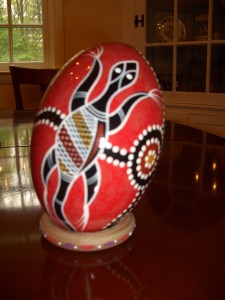Wow, CHI 2011 was a whirlwind of classes and papers and people—and of course, great views of the mountains! But for me, the most exciting thing was to debut our new concepts articulating the factors behind people’s experience of “cool.”
In a few weeks I’ll do a more formal introduction to the community of this new direction for InContext when we launch the website www.innovationincool.com. Right now the website is just a placeholder where you can sign up to be notified of the launch. More importantly, you can contribute to the content by sharing your “cool sightings.” Any time you think something is cool—any time something makes you say “cool!”—share it, and tell us why. It’s a community inquiry: What are we paying attention to when we use that word?
Once we decided to find out what makes things cool, our Cool Project started by collecting opportunistic bites of cool from real life. Then we did a large field study and discovered the set of concepts represented in the Wheel of Joy and the Triangle of Design, articulating the core factors that produce the cool experience. My talk at CHI introduced these concepts, which will also be the basis of my new book.
It turns out that what draws us to use the word “cool” is not always what makes the cool experience game-changing. Someone at CHI showed me a business card holder with a neat design on the top—“Cool!” I said. I bought a big painted egg when in Australia because it was “cool.” One way we use the word “cool” is when we see something interestingly different—whether it is technical, art, or architecture.
But it turns out that the cool experience of game-changing technology (like the iPhone) goes well beyond aesthetic uniqueness or even bits of fun and surprise. Cool technology that is game-changing has a profound impact on life—on the way we live our life. This impact produces an experience of joy. The Wheel of Joy and the Triangle of Design reveal how technology produces that joy. With these cool concepts as tools, designers can start to define and make tradeoffs to help produce the cool experience with their products.
I was pleased with the reception of these concepts at CHI. It started some of you thinking—which, of course, is the goal. I spoke with one person who went away deep in reflection about where he was in his life and how technology was helping him stay in the unstoppable momentum of life—one concept we talked about. Indeed, he got so distracted about how the cool concepts revealed things about his life that he wasn’t thinking about what it meant for design!
But the cool concepts have pretty profound impact on design thinking. For example—what does it mean to re-conceive your product in terms of its place in the whole flow of life? Central to cool is getting all of life’s activities and obligations done without stopping. So to make something cool you can start by asking yourself:
- Is your product a core activity that is valued by the person such that it has a right to claim attention and time? And if so—even core activities are only focused on for 15-30 minutes or even less at a stretch. Can your product support this kind of attention shift?
- Is your product offering really seen as a chore activity—something someone has to get out of the way to get on with the real things in life? Setting up travel, expense reports, setting up meetings, balancing accounts, doing what HR asked you to do… Chore activities are cool when they can fit into the dead time of life and get done with minimal and split attention.
- Or is your product really providing a momentary activity—something we like to check in on in those spare moments between core activities or in that dead time while waiting. Checking, monitoring, looking at status are all simply momentary activities—not a call for a big portal. So products are cool when momentary activities actually fit into moments and keep life moving.
Core time, chore time, and momentary time all come together to make up the whole of life as we try to balance home and work commitments—and never stop moving. They get differential time slots and attention—they get a different willingness to sit at a desk versus act on the run. When products fit into the flow of life as we like to live it—they are profoundly and lastingly cool.
But these distinctions are only one part of the cool factor of accomplishment found in the Wheel of Joy. When we can keep our life moving, we feel that we have accomplished our life on that day—and we say, “Ahhhh.” We say, “I’ll never go back to that old, stodgy way that holds my life hostage—this new way is too cool.” And that is why DVR’s are still cool after all these years.
The unstoppable momentum of life is only one example of the kind of thinking that our cool concepts can start to push. But like all new ideas they will bump up against existing assumptions and they will bump up against existing product design practices. So I look forward to sharing the implications of these concepts for our practice in HCI.
And I look forward to hearing from all of you about what cool means to you and what you think about our ideas—because we know that the next phase of software and technology development is going to be impacted by all the new platforms and interaction techniques. Getting a handle on how to think about what makes things cool is imperative for product success—and, well, just having fun making things cool.
So please watch out for our new site—and for more on how we use the cool concepts to push design thinking. And to those of you who attended the course, let me know what you are thinking now!


